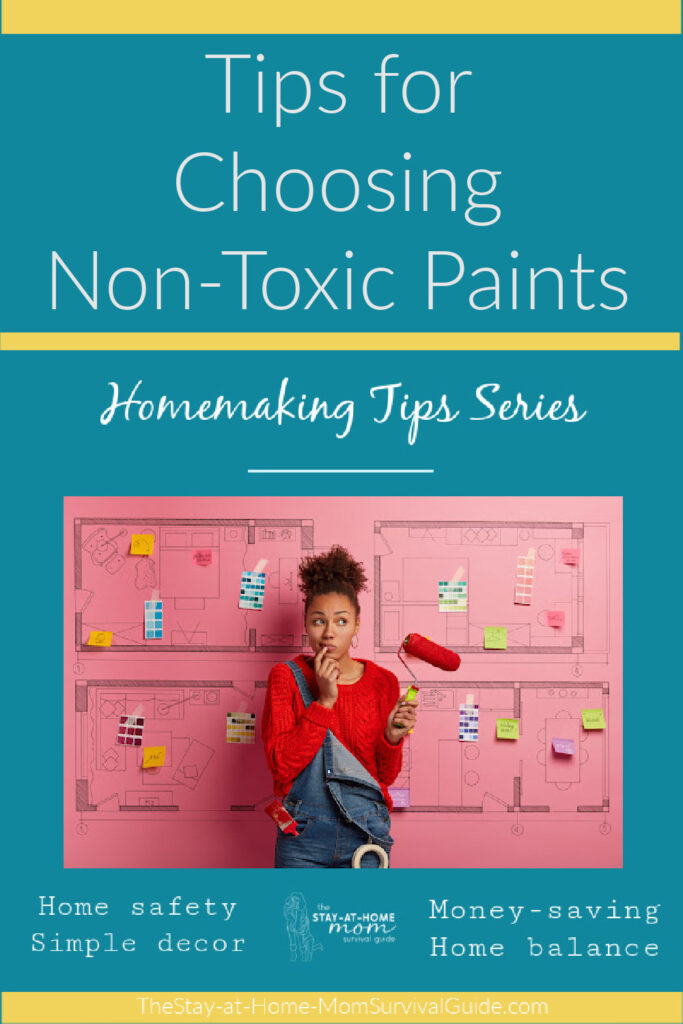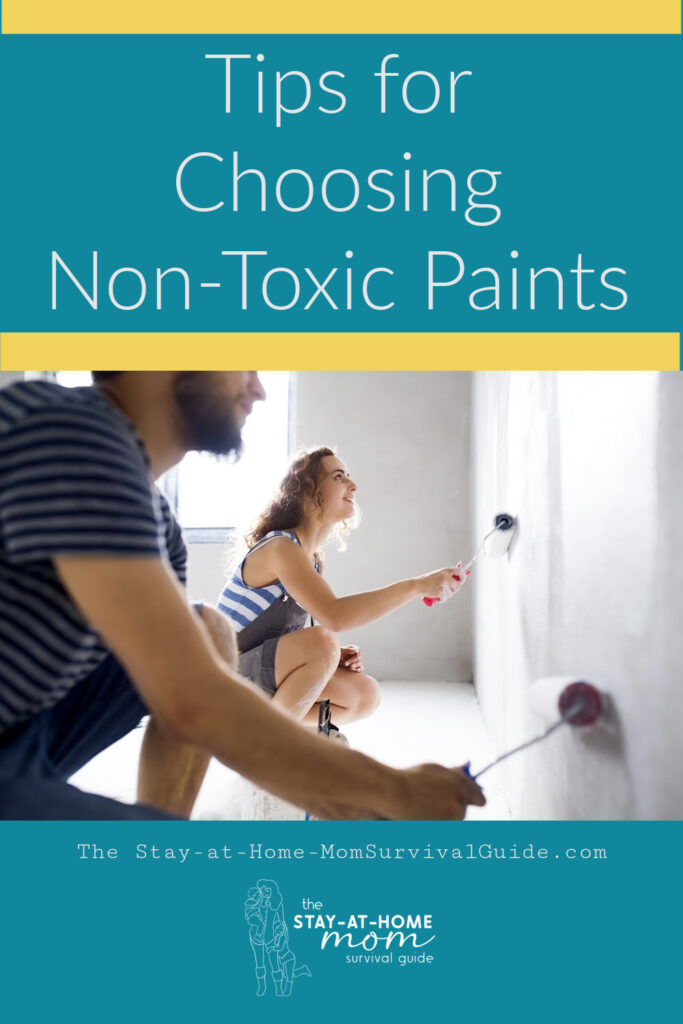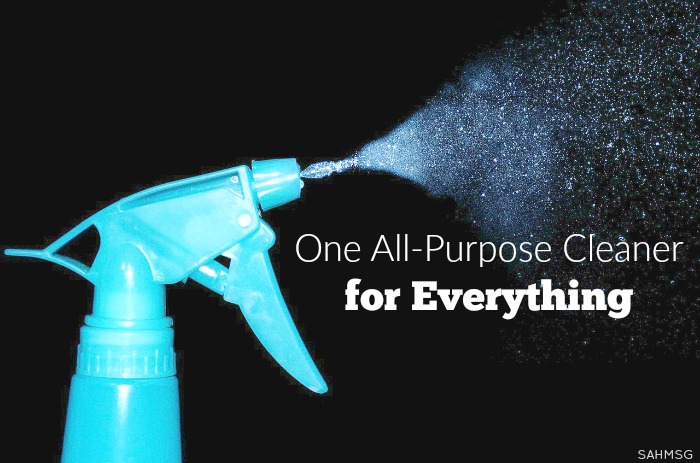As the world becomes more environmentally conscious, many people change their daily lives to reduce their carbon footprint and promote a healthier planet. However, one aspect that often gets overlooked is the products we use in our homes. From cleaning supplies to personal care products, harmful chemicals are lurking in everyday items that can negatively impact our health and the environment.
One area where this is especially prevalent is in paint products used for home renovations or decorating projects. In this blog post, we will explore the importance of choosing non-toxic paints for a healthier home environment and offer tips on identifying and selecting these safer options.
Whether you’re a homeowner embarking on a DIY project or a renter looking to spruce up your space, understanding eco-friendly paint choices can have far-reaching benefits for you and the planet.


The Importance of Choosing Non-Toxic Paints
Many may not fully grasp the significance of opting for non-toxic paints, but the impact on personal health and the environment is profound. Traditional paints often contain Volatile Organic Compounds (VOCs), which can contribute to a variety of health issues and environmental damage. By choosing non-toxic, eco-friendly alternatives, you are not only creating a healthier living space but also playing a pivotal part in protecting our planet.
Improved Indoor Air Quality
Non-toxic paints significantly enhance indoor air quality, as they lack the harmful VOCs found in traditional paints. VOCs can cause a variety of health issues, including headaches, respiratory problems, and allergies. By opting for non-toxic paints, you can breathe easier, knowing your air is cleaner and healthier.
Kinder to the Environment
Eco-friendly paints have a lower environmental impact compared to their traditional counterparts. They are free from harmful chemicals that can contaminate water and soil when disposed of improperly, thus reducing their ecological footprint.
Safer for Children and Pets
Non-toxic paints are a safer choice for households with small children or pets. Unlike traditional paints, they do not contain lead or other dangerous substances that can pose a risk if ingested or inhaled.
Longer-Lasting Finish
Non-toxic paints offer a durable, long-lasting finish. They resist peeling and chipping, keeping painted surfaces looking fresh and vibrant for longer. This makes them a cost-effective as well as a healthier choice for your home.
How to Identify Non-Toxic Paints
With so many products on the market, identifying which paints are non-toxic can be overwhelming. Here are some tips to help you choose safer options for your next project.
Check the Label
When shopping for paint, always look for labels indicating low or zero VOC and eco-friendly ingredients. Avoid products with labels that say “danger,” “poison,” or “harmful,” as these likely contain harmful chemicals.
Research Brands and Ingredients
Do some research on brands before making a purchase. Look for information on their website, read customer reviews, and check if they have any certifications from reputable organizations. Additionally, familiarize yourself with common toxic ingredients found in paints, such as benzene, formaldehyde, and phthalates.
Consider Natural Alternatives
If you want to take your eco-friendly paint choices further, consider natural alternatives such as milk paint, chalk paint, or clay-based paints. These options are made from all-natural ingredients and offer stunning results without harmful chemicals.
Additional Tips for a Good Paint Job
Whether you are an experienced DIYer or a beginner, knowing how to apply paint properly is just as essential as selecting the right kind. By following the right procedures, you can ensure a smooth, long-lasting finish that adds charm to your space while also being kind to your health and the environment. Here are some helpful pointers to guide you through your painting journey.
Prepare the Surface
A well-prepared surface is key to achieving a flawless paint job. Before starting, remove any loose or peeling paint and sand down any rough patches. This step is crucial to ensure the paint adheres well and provides a smooth finish.
Prime the Walls
Priming your walls before painting is an often overlooked but vital step. Primers cover imperfections on the wall and provide a perfect base for the paint to adhere to, resulting in a more vibrant, even color.
Use the Right Tools
Invest in good-quality brushes and rollers. Poor-quality tools can shed bristles or leave streaks on your walls, ruining the finish. Also, remember to use the right size tool for the job – smaller brushes for details and larger rollers for wide, flat areas.
Apply Multiple Thin Coats
Rather than applying one thick coat of paint, it’s best to apply multiple thin coats. This method results in a more even coverage and a longer-lasting finish. Remember to allow enough drying time between coats.
Clean Up Properly
Properly cleaning and storing your tools after each use can extend their lifespan and save you money in the long run. Remove any excess paint, thoroughly clean brushes and rollers with warm, soapy water, and store them properly to ensure they are ready for your next project.
FAQ about Choosing Non-Toxic Paints
What are VOCs?
VOCs, or Volatile Organic Compounds, are chemicals found in many traditional paints and can contribute to health issues and environmental damage.
Are non-toxic paints more expensive?
Eco-friendly paints may have a higher upfront cost compared to traditional options. However, they often provide better coverage, resulting in less paint needed for the same project, making them cost-effective in the long run.
Are natural alternatives effective?
Yes, natural alternatives such as milk paint, chalk paint, and clay-based paints offer stunning results without the use of harmful chemicals. They are also often more breathable, resulting in better indoor air quality. Consult with a painting expert to see more options for your specific project.
Conclusion
Choosing non-toxic paints is a simple yet impactful way to create a healthier home environment and contribute to a more sustainable future. With the tips and information provided in this guide, you can confidently make informed decisions when it comes to selecting and applying paint for your next project. Let’s work together towards a greener, cleaner world, one paint job at a time.
Follow the SAHM Survival Guide:
Subscribe by email to receive weekly updates and free access to subscriber-only tips and tools. You can also join me over on Youtube, Facebook, Instagram, Pinterest, X, LinkedIn, or our private Facebook group.








